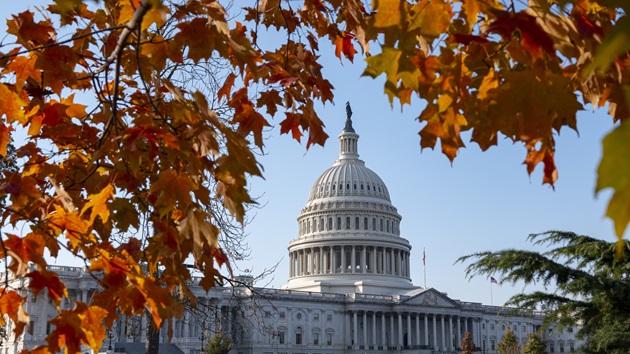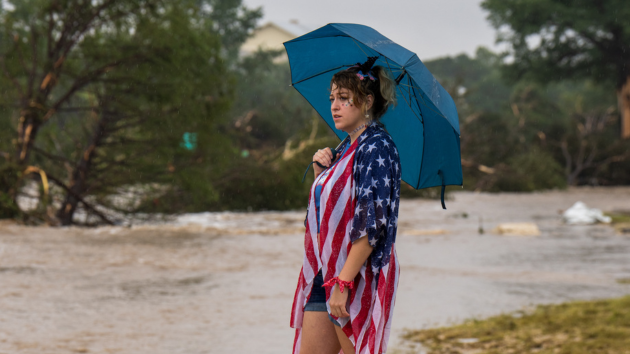
(NEW YORK) — The latest fall season outlook by the National Oceanic and Atmospheric Administration (NOAA) is out, and it’s calling for balmy and possibly hot conditions for much of the country in the fall.
The seasonal outlook from NOAA’s Climate Prediction Center forecasts whether parts of the country will be above, below or near average for parts of the country for the meteorological fall — September through November.
NOAA’s outlook puts much of the country with a higher chance of a warmer fall than normal, with the highest chance of warmer-than-average temperatures in the Southwest and New England. This means that most of the country will likely be milder than what is usually expected from September to November.
However, this outlook doesn’t forecast variations that happen over days, weeks, or over one month but rather what the overall average would likely look like.
September in a particular region could feature typical fall conditions, but October and November could end up well above normal, swaying the three-month average to above normal for the entire season. What the outlook means for a specific local area depends on the typical climate around it.
For example, average high temperatures for Phoenix, one of the hottest cities in the country, range from 104 degrees at the beginning of fall to 70 degrees towards the end of fall. New York City ranges from 76 degrees at the start of fall to 54 degrees through November.
While the seasonal outlook highlights what is likely for the fall and where abnormal warmth is likely, it doesn’t tell where any extreme heat would be or for how long it would be. It also doesn’t tell where any drastic cooldowns would be or for how long, if there are any.
What previous falls have taught us
According to the Environmental Protection Agency and NOAA, falls in the Contiguous United States have been getting warmer since the early 1900s, with the last few falls being warmer than the 30-year average.
NOAA also reported that fall 2024 was the warmest on average for the country in 130 years, with more than half of all U.S. states ranking among the top-three warmest falls.
What does a warmer fall mean for you?
A warmer fall has more impacts than just keeping the warmer weather and holding off on the winter jackets. According to Climate Central, warmer falls can prolong potentially dangerous summer-like heat and increase the demand and cost of cooling during warmer fall days.
Climate Central also found that warmer falls extend the growing and allergy seasons, as well as the wildfire season for the West.
The extended warmth affects the fall foliage — a natural spectacle that dazzles the country every fall and boosts local tourism. According to Columbia University, warmer falls can delay the start of changing leaves, shorten the fall foliage season overall, and reduce the vibrancy and color quality of fall foliage.
Why so warm?
A big part of what forecasters look for when predicting the temperature, and even their seasonal precipitation outlook, are climate patterns in the Pacific Ocean. The most influential one that forecasters look at is the El Nino-Southern Oscillation (ENSO). The ENSO is a natural variation of warmer, neutral and cooler waters along the equatorial waters of the eastern Pacific.
This natural variation is one of the biggest driving forces of large-scale weather patterns over the Pacific Ocean, and eventually over North America.
Forecasters at the Climate Prediction Center are expecting the ENSO to shift from a neutral pattern to a cooler pattern, or La Nina, by November. This would likely put the U.S. in a dominant weather pattern for much of the fall that sees the southern half of the country experience drier and warmer weather, while the Pacific Northwest and Ohio Valley will get wetter-than-normal conditions.
Copyright © 2025, ABC Audio. All rights reserved.
- Powerball jackpot soars to $875M — 2nd biggest this year - December 7, 2025
- US placed in favorable World Cup group: What to know and how to get tickets - December 6, 2025
- Suspect charged in stabbing on Charlotte light rail train - December 6, 2025











